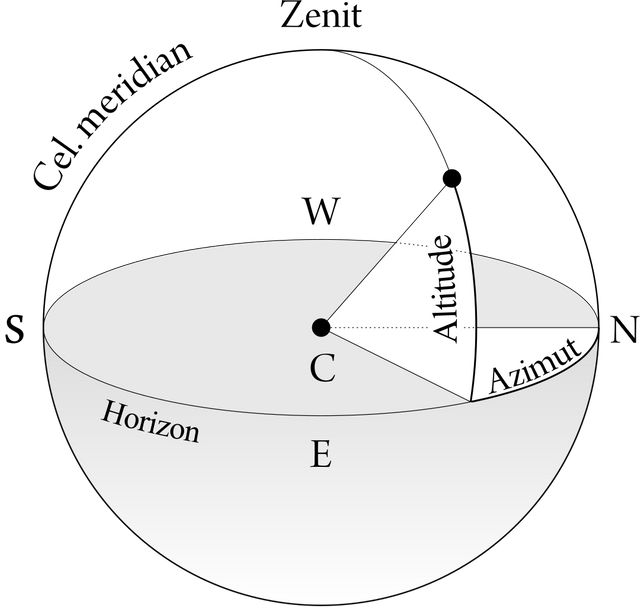Concepts in Astronomy #8. Altitude
Altitude
In astronomy, the altitude of a celestial object is the angle between the horizontal vector of the position of the object in the celestial sphere (with respect to the observer) and the vector pointing directly towards the object. It is the angle of an object measured upwards from the horizon of the observer.
For example, a celestial object at the level of the horizon has an altitude of 0°. An object directly overhead has an altitude of 90°. Negative altitudes refer to objects below the horizon.
It is interesting the point that the altitude angle of Polaris (the North Star) closely reflects the Earth's latitude of an observer in the Northern Hemisphere.
Previous Posts
Concepts in Astronomy #1. Introduction
Concepts in Astronomy #2. The Ecliptic
Concepts in Astronomy #3. The Celestial Equator
Concepts in Astronomy #4. Right Ascension
Concepts in Astronomy #5. Declination
Concepts in Astronomy #6. The Celestial Sphere
Concepts in Astronomy #7. Azimuth

